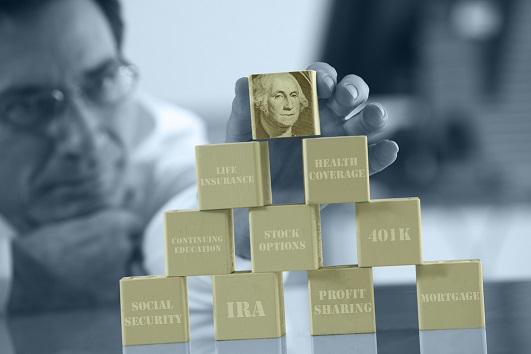 by Robert Sharpe
by Robert Sharpe
The following article is the second of a two-part series. Part one was published in the November 2017 Give & Take. Click here to read Part One. The article is excerpted from a Trusts & Estates magazine article that originally appeared in September 2017.
As discussed in Part 1, the “Great American Wealth Transfer,” and an accompanying windfall for charity, was predicted to begin roughly 20 years ago. While this philanthropic windfall has yet to materialize, we may well see an increase in giving through estates as the older members of the massive Baby Boomer generation begin to pass away.
How will Baby Boomers boom?
The Baby Boomer generation differs in many respects from the G.I. and Silent generations that preceded it, and early indications are that nonprofit organizations should expect those differences to extend to the way Baby Boomers approach their charitable giving in later years.
Boomers are more likely to have college degrees and are generally more financially sophisticated than their elders. Many participated in qualified retirement plans throughout their careers—plans that were only introduced at mid-career for most of today’s decedents. As a result, the bulk of many Boomer estates will be transferred through beneficiary designations governing the assets remaining in these accounts.
Because these assets represent taxable income when received by heirs, Baby Boomers will be more likely to design charitable giving plans that result in making the best use of these assets to fund charitable gifts, while using other property that will not be subject to income tax to fulfill gifts to children and other heirs.
Adopting charities
Baby Boomers also married later and are more likely to be childless than earlier generations. Some have estimated that about one-third or more of Baby Boomers are childless, a much higher rate than the G.I. and Silent generations (which were closer to 10 percent).1
Childless individuals tend to accumulate more assets and are also more concerned about their long-term healthcare provisions as they often can’t rely on natural heirs to care for them. Some childless Boomers are addressing their lack of heirs by, in effect, “adopting” charities in their later years, as they look for ways to leave a legacy.
Estate tax concerns
Childless or not, Baby Boomers may be the first generation in over a century that won’t need to consider the impact of federal estate taxes when engaging in their final estate planning.
Even though federal estate taxes don’t currently apply to 99.9 percent of decedents, many among the general population perceive these taxes as playing a greater role than is actually the case. Some in the nonprofit world are concerned that a very public repeal of this tax could lead to less charitable giving.
In reality, this is counter-intuitive. Anyone with a taxable estate who has left assets to charity in the past has done so at a financial cost to family or other heirs. These estates were split among family and charities, with a portion devoted to taxes on the amount received by family and other non-charitable recipients. Those other than charities were responsible for the entire amount of any tax due. With an elimination of the estate tax, the family would owe no taxes on their portion of the estate and would actually receive more, while the charity would receive the same amount.
For example, suppose an individual with assets in her estate valued at $10 million, that would otherwise be subject to tax, plans to leave a $1 million bequest to charity, with the remainder going to her children. Under today’s law, the donor’s children receive the remainder after payment of estate tax of, say, $2 million, netting $7 million. With a repeal of the estate tax, the charity still receives $1 million, while the family would net $9 million (less any tax due in the case of the minority of Americans who live in states that impose levies on estates).
Would an otherwise motivated donor remove this bequest because of an estate tax repeal? IRS data reveals that,year in and year out, only about 20 percent of taxable estates on average include bequests to charity.2 The remaining 80 percent, many of which are from people who have made charitable gifts during their lifetimes, do not include charitable bequests and choose to pay the tax due on the amount left to their heirs.3
I believe charitably inclined individuals will, in most cases, continue to leave the same, if not more, to charity when they realize their heirs are receiving a windfall as a result of estate tax repeal. Surveys of the wealthy bear this out.4
The outcome of current tax reform discussions will largely determine the extent to which donors plan their giving in light of income and estate taxes. In any event, absent an estate tax factor, Baby Boomers may plan their charitable gifts in ways that allow them to enjoy tax benefits while they’re living. This may mean more outright lifetime giving that serves to reduce income taxes or more gifts through charitable remainder trusts (CRTs) and other lifetime gifts that yield income and current tax benefits.
For donors who would like to see growth in income over time, CRTs may be the best option. Since the donor and the charity both benefit when the asset grows in value, the charitable beneficiary will be monitoring investment performance and looking for growth that will also lead to increased income for the donor.
Boomers are fast becoming prime candidates for such gifts. Studies have shown that the average age of beneficiaries of CRTs is 68 at the time of creation of the trust.5 The average age of CGA donors is around 79.6 With the number of people in these age ranges about to skyrocket over the coming two decades, I predict a period of unprecedented growth in split interest gifts along with more traditional gifts through estates.7 ■
To learn more about how the coming changes in demographics may affect fundraising, attend one of our highly regarded Gift Planning Seminars. Click here for details.
Robert Sharpe is Chairman of Sharpe Group.
- 1. www.eurekalert.org/pub_releases/2015-05/nsij-abb051315.php, www.orlandosentinel.com/health/aging/os-wapo-aging-solo-boomers-without-children-20160822-story.html
- Internal Revenue Service Tax Statistics, www.IRS.gov
- Ibid.
- http://newsroom.bankofamerica.com/files/press_kit/additional/2016_US_Trust_Study_of_High_Net_Worth_Philanthropy_-_Executive_Summary.pdf
- Holly Hall, “Surge of Remainder Trusts Seen as Baby Boomers Age,” The Chronicle of Philanthropy (July 10, 2014), www.philanthropy.com/article/Surge-of-Remainder-Trusts-Seen/150509
- www.acga-web.org/about-gift-annuities-top/gift-annuity-best-practices
- www.wealthmanagement.com/philanthropy/resurgence-charitable-trusts

